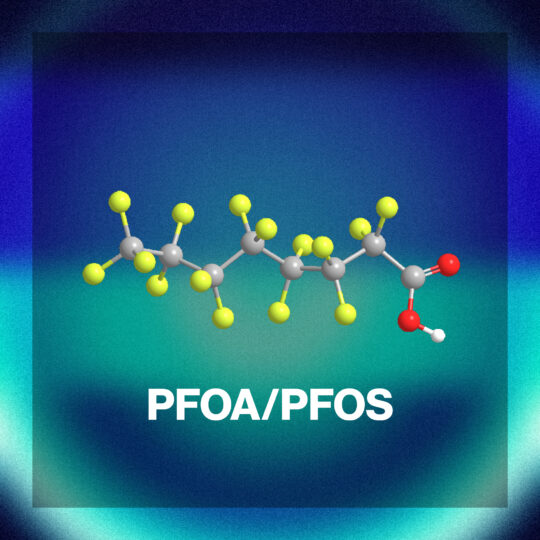What Is The Meaning Of PFOA And How Can We Stop It Contaminating Domestic Water Supplies?
Companies, academic institutions and government health and environmental departments are working towards eliminating the use of PFOA in manufacturing. But why?
Find out what the meaning of PFOA is, how it relates to PFOS and similar compounds, why it could be harmful to humans, and how we can reduce potable water contamination.
What is PFOA?
Also known as perfluorooctanoic acid, it’s a man-made chemical. You’ll find it used in the manufacture of products that resist sticking, heat, water, stains, and grease.
The most famous brand name for products with resistant qualities is Teflon. It’s a coating mainly used on cookware but it’s found in many other consumer goods.
What is the meaning of PFOA?
PFOS and PFOA sound the same, and are often confused, because they are part of the same family of compounds.
PFOA is not Teflon. Instead, PFOA (perfluoroctanoic acid, also known as ‘C8’) and PFOS (perfluorooctanesulfonic acid) are perhaps the best-known examples within a much larger group of chemicals called perfluoroalkyl compounds, which have been used extensively in the manufacture of grease repellents in food packaging, stain-resistant carpets, foam for fire fighting, cardboard packaging, and water repellents in outdoor clothing.
PFOA Products
PFOA is durable and long-lasting chemical, which is why it is used in the manufacture of non-stick and water-repellent products. Because it is so stable, it doesn’t dissolve or break down easily or quickly, so produces products that last.
However, because PFOA does not dissolve or break down, it can also pose potential issues for the environment and our health from contamination.
What Is The Problem Of PFOA?
PFOA can also be a by-product when other chemicals break down in manufacturing processes, which can often get into air, water and soil. It can then spread and contaminate soil and water for miles.
They are so-called ‘persistent organic pollutants (POPs), which are bio-accumulative and have been linked to a number of serious health concerns. In the US, the EPA has issued a health advisory for PFOA after studies showed that it is linked to numerous serious health issues.
How Can You Remove PFOA From Drinking Water?
Because of the potential health issues PFOA contamination can cause, the removal of perfluorinated compounds, from municipal water supplies, has become an important issue in recent years and the performance of various granular activated carbons for this application has been extensively studied.
Our Solutions for the Removal of PFOA Compounds
Puragen has developed a specific GAC product to deal with PFOA/PFOS contaminants, having an optimised pore structure to improve the rate of adsorption and removal of these larger molecules.
Laboratory and field testing has shown this optimised GAC grade to offer a significantly superior performance in the removal of PFOA-type compounds, compared with competitors’ leading coal-based GAC products.
Advantages of the Puragen grade include:
- 80% better removal performance of PFOA and PFOS compounds;
- Less likely to be fouled by other impurities present in the water, due to its optimised pore structure;
- 20% lower density, meaning the same contact time between the contaminated water and the carbon bed can be achieved with a lower mass of carbon;
- This lower density also results in less water being required for backwashing of the GAC filter;
- The product has been shown to last typically 2-3 times longer, before requiring replacement;
- Can be supplied in one of our AquaSorber® mobile carbon filters, offering a convenient ‘plug & play’ concept for trial purposes, or additional filtration capacity;
- Like all of our GAC products, subject to passing Carbon Acceptance, it is suitable for multiple reactivation cycles, meaning it can be reused in the customer’s filters and avoids the need for virgin carbon material, offering a carbon footprint saving of over 90%.
In addition to real-world testing of our products for the removal of PFOA and PFOS, we also have sophisticated computer modelling software relating to over 100 other perfluorinated compounds, so Puragen can assist water companies, OEMs and contractors with the selection of the optimum treatment solution for every situation.

